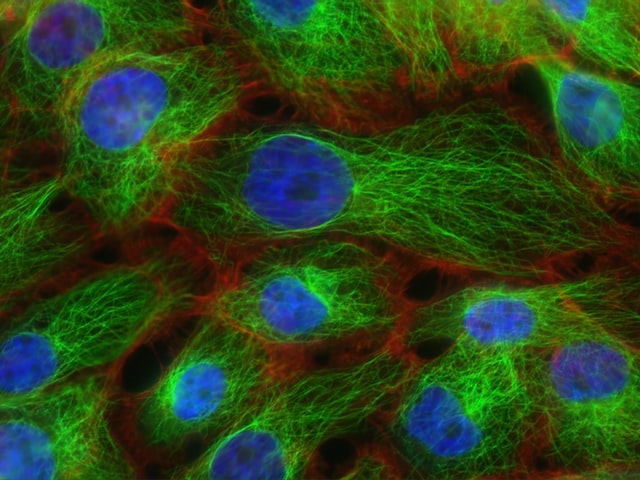
Liver cancer is becoming a more common cause of death in India and around the world.
Liver cancer, like all malignancies, is linked to an abnormally high rate of cell proliferation. Tumors arise when more cells are created than are required. Tumors can be benign or malignant.
Because benign tumors may be removed from the body, they are relatively harmless. Malignant tumors, on the other hand, are difficult to treat and can lead to cancer.
These tumors grow quickly and spread to other parts of the body via blood and lymph nodes.
In this article, Dr. Gaurav Gupta who is one of the best liver transplant surgeons will discuss everything that you should know about liver cancer along with liver cancer treatment in Mumbai.
Liver Cancer Types:
Hepatocellular Carcinoma, Intrahepatic Cholangiocarcinoma, and Hepatoblastoma are all malignancies that can affect the liver. Hepatocellular Carcinoma is the most common type of liver cancer that starts in the liver’s primary cells, the hepatocytes.
People who have chronic liver problems, such as cirrhosis, are more likely to develop this deadly disease. Blood tests, conventional imaging tests, and a liver biopsy are used to screen for atypical hepatocellular carcinoma.
Magnetic Resonance Elastography and other advanced imaging techniques may also be used by the best liver transplant hospitals.
Symptoms And Signs Of Liver Cancer:
The prognosis for liver cancer is often poor. The symptoms are dormant in the early stages of the disease, and once they appear, the sickness is virtually uncontrollable.
Typical signs and symptoms of liver cancer include, but are not limited to, liver hypertrophy, white-collared feces, and yellowing of the skin.
Other non-specific symptoms include unusual edema, rapid and severe weight loss, appetite loss, nausea, vomiting, and continuous weariness. These symptoms are referred to as nonspecific since they might be caused by a variety of chronic illnesses.
Stages of Liver Cancer:

Photo Credit: Unsplash
According to the TNM staging method, liver cancer is divided into four stages and various sub-stages.
Stage 1: When liver cancer first appears, a tumor forms within the liver. The tumor’s effects, on the other hand, are limited because it has yet to come into touch with any blood arteries. Related.
Stage 2: The tumor develops in size, reaching a diameter of up to 5 cm. There’s also the risk of multiple tiny tumors growing. Despite the fact that the tumor has grown into blood vessels, the dissemination has remained localized.
Stage 3A: This stage is also marked by the tumor’s expansion (s). The tumor is around 5 cm broad on average, and the surrounding lymph nodes are immune to cancer.
One or more tumors enter into the portal or hepatic veins of the liver in Stage 3 B: Cancer has not yet made contact with the local lymph nodes or distant bodily organs.
Stage 3C: The tumor has engulfed the liver’s outer surface or has entered surrounding organs. The malignancy has not spread to other locations.
Stage 4A: The size and number of liver tumors increase dramatically. Tumors have migrated into lymph nodes, blood arteries, or nearby organs at this stage. The far-flung locations are still untouched.
Stage 4B: Malignant cells have infiltrated the entire body.
LiverCare Mumbai offers the best liver cancer treatment options for Hepatocellular Carcinoma, which may include surgery, liver transplants, ablation treatments, chemotherapy, radiation therapy, and targeted medication therapy. A typical approach is to combine two or more therapies.
Types of Liver Cancer Treatment

Photo Credit: Unsplash
Hepatocellular Carcinoma, also known as liver cancer, is treated with one of the following methods:
- Surgery is one of the most common treatments for liver cancer. The damaged sections of the patient’s liver are surgically removed, preventing the organ from failing completely. With certain dietary limitations, the patient can live a normal life.
- Liver transplants are a popular therapy option for those who have severely damaged livers. A complete or partial liver from a donor is used to replace the damaged liver. Over time, the chances of success have increased.
- Patients with tiny tumors on their liver who are unable to be operated on due to ill health or advanced age can undergo ablation operations. The tumors are eradicated without the organ being removed in any way.
- Chemotherapy is a treatment that involves administering a combination of chemicals to the patient’s body in order to target and eradicate tumors in the liver.
- Radiation therapy – High-energy particles are directed at the patient’s liver tumors in an attempt to eradicate them.
- Targeted drug therapy is injecting customized medications into a patient’s body that specifically target tumors or malignant cells while leaving healthy cells alone. Targeted medication therapy offers fewer negative effects than chemotherapy.
About The Author:
Arunava Deb: Masters in Business Administration by Education, Health Blogger by passion & profession. An enthusiast working in the field of health blogging. Have written 700+ health-related articles on Hair transplant, IVF, Oral health, Cancer, Neurosurgery, Acupuncture, Plastic surgery & other general health issues. Have been working in close relation with Doctors and the health sector.




